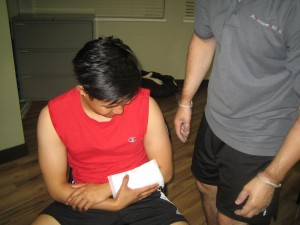Scars form as a way in which the body heals itself after an injury or a surgical procedure. The permanent scars are often seen after cuts, burns and sores. These form once the skin cells and tissues known as fibroblasts multiply in order to repair the damaged cells. The scars often appear pinkish in color and shine due to the collagen used during the wound repair process. Nevertheless, some scars will take on a different appearance and these are considered abnormal and would require more care in order to minimize their obvious appearance.
What are the types of abnormal scarring?
Abnormal scarring occur in two forms – keloid scars and hypertrophic scars. The keloid scars can occur in a small percentage of individuals. They occur once the fibroblasts do not stop multiplying after the wound has already healed. It results to the formation of a large bump of scar tissue that appears red in color or hyper-pigmented, painful and itchy. If removed, it will cause more of the tissue to form, thus surgery might not be the ideal option.
As for hypertrophic scars, they are more common and usually localized to the wound. These scars appear similar to a keloid scar but do not involve the same amount of scar tissue buildup. They can heal on their own, thus allowing a decrease in the redness. On the other hand, they will not disappear.

Are there quick solutions for abnormal scarring?
Even though you cannot completely cover up raised tissue, you can cover up the redness using over-the-counter make-up and foundations. These might help with the abnormal scarring that is located in noticeable places such as the earlobes and the face. You can also minimize the natural appearance of the scar by protecting it from exposure to sunlight since they can intensify the red tint of the scar.
What are the procedural treatments?
The procedural modes of treatment for abnormal scarring include monthly injections of cortisone into the scar. This will help minimize the appearance while at the same time flatten the scar within 3-6 months. Even though hypertrophic scars usually respond well to this form of treatment, keloid scars might not or might recur after the treatment. The side effects of this treatment include infection and pain.
Dermabrasion is another treatment option for abnormal scarring in which the layers of skin are sanded away in order to allow new skin to emerge. The new skin might be less noticeable. Nevertheless, it does not completely eliminate scars with results that can last up 10 years. This treatment option does have its share of side effects such as swelling, redness, soreness and even infection.
How to prevent abnormal scarring
There are ways to prevent keloid and hypertrophic scars from developing by simply using pressure through dressings, paper tape or silicone pads on the wound for 23-24 hours in a day. You can learn how to properly take care of wounds to prevent scarring by taking part in a first aid course. This must be done after the wound has healing but before the scar has formed, which is usually a month.
